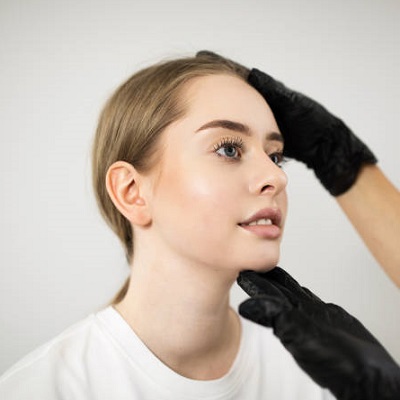Gynecomastia, a condition marked by the enlargement of male breast tissue, often emerges during adolescence. It’s a result of hormonal changes that occur during puberty, a phase where the body experiences a surge in testosterone and estrogen. While gynecomastia is usually temporary and resolves on its own, it can be a source of emotional and social distress for teenagers.
What Causes Gynecomastia in Adolescents?
Gynecomastia Dubai in adolescents is primarily caused by hormonal imbalances. During puberty, boys experience fluctuations in testosterone and estrogen levels. When estrogen levels temporarily surpass testosterone, breast tissue may enlarge. Other contributing factors include:
- Medications: Some medications, such as those for anxiety, depression, or certain antibiotics, can cause gynecomastia as a side effect.
- Obesity: Excess fat can lead to increased estrogen production, contributing to breast tissue growth.
- Underlying Medical Conditions: Rarely, conditions such as liver disorders, thyroid problems, or tumors can lead to gynecomastia.
- Substance Use: Use of anabolic steroids, alcohol, or recreational drugs can also trigger the condition.
Recognizing the Signs of Gynecomastia
Parents may notice the following signs in their adolescent children:
- Enlarged Breast Tissue: Typically feels like a firm lump beneath the nipple.
- Tenderness or Pain: The affected area may be sensitive to touch.
- Asymmetry: In some cases, one breast may be more enlarged than the other.
If you observe these symptoms, consulting a doctor is essential to rule out other conditions like lipomastia (fat accumulation without glandular growth) or more serious concerns.
Emotional Impact of Gynecomastia on Adolescents
The psychological effects of gynecomastia can be profound, especially during adolescence—a time of heightened self-awareness and social comparison. Adolescents with gynecomastia may experience:
- Low Self-Esteem: Changes in appearance can lead to feelings of inadequacy or embarrassment.
- Social Anxiety: Fear of being teased or judged may result in avoiding social situations, particularly those involving physical activities like swimming or sports.
- Depression or Mood Swings: Prolonged distress over the condition can take a toll on mental health.
A Parent’s Role in Providing Emotional Support
- Open Communication: Encourage your child to share their feelings and reassure them that gynecomastia is common and often temporary.
- Avoid Teasing or Criticism: Even lighthearted comments can exacerbate feelings of self-consciousness.
- Foster Positive Body Image: Emphasize their unique strengths and qualities beyond physical appearance.
Diagnosis and When to Seek Medical Advice
In most cases, gynecomastia during puberty resolves naturally within six months to two years. However, it’s important to consult a healthcare professional in the following situations:
- The enlargement persists beyond two years.
- There is significant pain or discomfort.
- The breast tissue continues to grow rapidly.
- The condition causes severe emotional distress.
Diagnostic Process
Doctors in Dubai typically perform a physical examination and review the child’s medical history. In some cases, they may recommend additional tests, such as:
- Hormonal blood tests
- Ultrasounds or mammograms to assess breast tissue
- Liver or kidney function tests
Treatment Options for Adolescents
Treatment for gynecomastia depends on the underlying cause and the severity of the condition.
1. Observation
For most adolescents, no treatment is necessary as the condition resolves naturally. Regular follow-ups with a doctor can help monitor progress.
2. Medication
If the condition persists or causes significant distress, medications that regulate hormone levels may be prescribed. However, these are typically reserved for severe cases.
3. Surgical Intervention
In rare cases where gynecomastia does not resolve and significantly impacts the teenager’s quality of life, surgery may be considered. Common procedures include:
- Liposuction: Removes excess fat.
- Mastectomy: Removes glandular tissue.
Parents should consult with experienced surgeons in Dubai who specialize in adolescent care to understand the risks and benefits.
Lifestyle Changes to Support Recovery
Lifestyle changes can play a role in managing gynecomastia, particularly when obesity is a contributing factor.
- Healthy Diet: Encourage balanced meals rich in lean proteins, fruits, vegetables, and whole grains.
- Regular Exercise: Activities like swimming, cycling, and strength training can help reduce body fat and improve overall health.
- Avoid Triggers: Educate your child on the risks of anabolic steroids, recreational drugs, and excessive alcohol consumption.
Resources for Parents in Dubai
Dubai offers a range of resources to support families dealing with gynecomastia in adolescents:
- Specialist Clinics: Many hospitals and clinics have endocrinologists and plastic surgeons experienced in treating gynecomastia.
- Support Groups: Connecting with other families can provide emotional support and valuable insights.
- Educational Workshops: Programs that address adolescent health and body image are available in schools and community centers.
Conclusion
Gynecomastia in adolescents is a common and often temporary condition, but its emotional impact can be significant. For parents in Dubai, understanding the causes, signs, and treatment options is key to supporting their child through this challenging phase.




